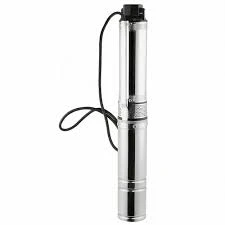დეკ . 06, 2024 05:13 Back to list
deep well pump working principle
Understanding the Working Principle of Deep Well Pumps
Deep well pumps are essential devices used for extracting water from significant depths underground. They play a crucial role in agriculture, municipal water supply, and various industrial applications. Understanding how these pumps work can help appreciate their importance and efficiency in water extraction. In this article, we will delve into the working principle of deep well pumps, their components, and the mechanics behind their operation.
What is a Deep Well Pump?
A deep well pump is a type of centrifugal pump specifically designed to lift water from deep underground sources. These pumps are typically submerged beneath the water level in a well, operating efficiently under high-pressure conditions. Deep well pumps are often used in wells that are deeper than 25 feet, where other types of pumps may struggle to operate effectively.
Components of a Deep Well Pump
The primary components of a deep well pump include
1. Pump Bowl Assembly This contains the impellers and diffusers that facilitate the pumping action. Multiple stages may be added to create more pressure as water is lifted. 2. Column Pipe This is a long vertical pipe that transports water from the pump assembly to the surface. It connects the pump bowl assembly to the discharge head at the top of the well.
3. Discharge Head Located at the surface, the discharge head serves as the outlet for the water and supports the pump assembly. It often includes an access point for maintenance and electrical connections.
4. Motor The motor, either electric or diesel-powered, drives the pump. In deep well applications, submersible motors are often used due to their ability to withstand high-pressure conditions and keep operation submerged.
5. Suction Strainer This component filters out debris from the Water before it enters the pump, preventing damage to the impellers.
How Deep Well Pumps Work
The working principle of a deep well pump revolves around the centrifugal pumping mechanism
. Here’s a breakdown of the processdeep well pump working principle

1. Submersion The pump, along with its motor, is installed deep within the well, below the water table. This location is essential for effective water extraction.
2. Water Entry Water enters the pump through the suction strainer, which captures any solid particles, preventing them from damaging the pump components.
3. Centrifugal Action The motor starts, turning the impellers in the pump bowl assembly. As these impellers rotate, they impart kinetic energy to the water, which causes it to move outward due to centrifugal force.
4. Pressure Variation As the water moves outward, it passes through the diffusers, which convert the kinetic energy into pressure energy. The design of the pump allows for multiple impeller stages, amplifying the pressure and enabling the water to be lifted from great depths.
5. Water Transportation The pressurized water then travels up through the column pipe. The continuous pressure generated by the pump propels the water to the surface.
6. Discharge Finally, the water reaches the discharge head, where it can be directed to storage tanks, irrigation systems, or distribution networks.
Benefits of Deep Well Pumps
Deep well pumps offer several benefits, including
- High Efficiency They are designed to operate efficiently in high-pressure environments, making them suitable for deep applications. - Reliability With fewer mechanical parts above ground, deep well pumps are less susceptible to external damage and can operate in various environmental conditions.
- Greater Depth Unlike shallow well pumps, deep well pumps can draw water from considerable depths, making them ideal for regions with low water tables.
Conclusion
Deep well pumps are vital for meeting the water demands of communities, agriculture, and industries. Their unique design and operation principles allow them to provide reliable water extraction from substantial depths efficiently. Understanding how they work can help users maintain and optimize these systems, ensuring a consistent and sustainable water supply. Whether for domestic use or large-scale applications, deep well pumps represent a critical technology for modern water management.
-
Water Pumps: Solutions for Every Need
NewsJul.30,2025
-
Submersible Well Pumps: Reliable Water Solutions
NewsJul.30,2025
-
Stainless Steel Water Pumps: Quality and Durability
NewsJul.30,2025
-
Powerful Water Pumps: Your Solution for Efficient Water Management
NewsJul.30,2025
-
Oil vs Water Filled Submersible Pumps: Which is Better?
NewsJul.30,2025
-
Deep Well Pumps: Power and Reliability
NewsJul.30,2025
-
 Water Pumps: Solutions for Every NeedWhen it comes to handling dirty water, the dirty water pump is a must-have.Detail
Water Pumps: Solutions for Every NeedWhen it comes to handling dirty water, the dirty water pump is a must-have.Detail -
 Submersible Well Pumps: Reliable Water SolutionsWhen it comes to ensuring a reliable water supply, submersible well pumps are a top choice.Detail
Submersible Well Pumps: Reliable Water SolutionsWhen it comes to ensuring a reliable water supply, submersible well pumps are a top choice.Detail -
 Stainless Steel Water Pumps: Quality and DurabilityWhen it comes to choosing a water pump, the stainless steel water pump price is a crucial factor.Detail
Stainless Steel Water Pumps: Quality and DurabilityWhen it comes to choosing a water pump, the stainless steel water pump price is a crucial factor.Detail
